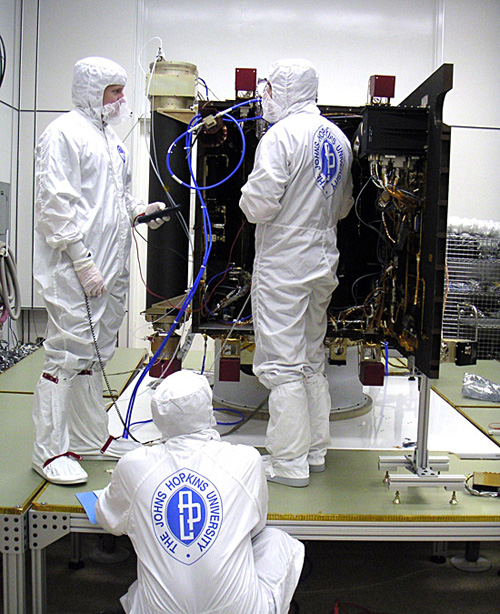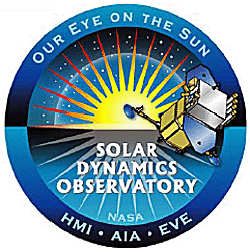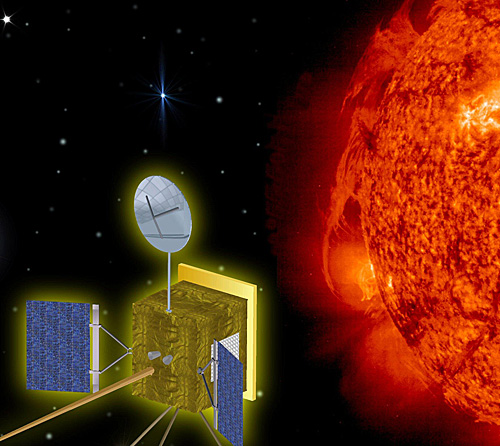Key Takeaways:
State of the art
But a new era of solar study began in 1995 with launch of the Solar and Heliospheric Observatory (SOHO). The joint NASA/ESA mission, stationed about 930,000 miles (1.5 million kilometers) sunward of Earth, was designed for at least 2 years of continuous solar observation and is still going strong.
One of SOHO’s most important functions is watching for coronal mass ejections (CMEs), billion-ton clouds of plasma that frequently erupt. SOHO warns of Earth-directed CMEs and gives engineers time to batten down the hatches on satellites, power grids, and other technologies sensitive to solar storms.
Two Earth-orbiting NASA satellites now complement SOHO’s mission. The Transition Region and Coronal Explorer (TRACE), launched in 1998, explores the magnetic structures that emerge from the Sun’s visible surface and extend into its upper atmosphere, the corona.
The Reuven Ramaty High Energy Solar Spectroscopic Imager (RHESSI), launched in 2002, gathers simultaneous X- and gamma-ray images of solar flares, which often are associated with CMEs. RHESSI’s data let scientists explore the processes controlling how flares release their titanic energy.
SOHO, TRACE, and RHESSI have advanced significantly scientists’ understanding of the Sun’s corona, the solar wind that streams outward from it, and the workings of solar flares. But as exciting new missions prepare to extend that knowledge, the best is yet to come for solar scientists. Here are some highlights.
STEREO: 2006
First to fly will be NASA’s Solar-Terrestrial Relations Observatory (STEREO). Slated for a February 2006 launch, STEREO consists of two nearly identical satellites. One will orbit the Sun slightly ahead of Earth, while the other will lag behind. Just as two eyes give us a three-dimensional view of our environment, STEREO’s imagers will provide the first-ever three-dimensional views of CME structure.
For the first few weeks following launch, the two spacecraft will drift apart slowly. About 1 month into the mission, both probes will make a close encounter with the Moon, using its gravity to fling them away from Earth in opposite directions. Both spacecraft orbits are a bit more eccentric than Earth’s. STEREO A (for “ahead”) will track slightly inside Earth’s orbit, and STEREO B (“behind”) will orbit a bit outside. The small differences in average distance from the Sun cause the two spacecraft to slowly drift away from Earth in opposite directions over the course of the 2-year mission.
Japan, the United States, and the United Kingdom collaborated on Solar-A, which was renamed Yohkoh (“Sunshine”) after its 1991 launch. The same nations have joined together for Solar-B. Armed with a trio of telescopes sensitive to optical, ultraviolet, and X-ray wavelengths, Solar-B should prove a worthy successor. The craft’s X-ray telescope has several times the resolution of Yohkoh’s. Plans call for a minimum mission of 3 years, with launch into Earth orbit sometime in 2006.
Scientists believe Solar-B’s sensitivity and high resolution will allow them to study magnetic flux tubes for the first time. Space observations have shown the Sun’s total energy output varies in phase with its magnetic activity cycle. Scientists believe Solar-B’s resolution and wavelength coverage will help determine just how the Sun’s magnetic field modulates its luminosity.
NASA’s Solar Dynamics Observatory (SDO), the first launch of the International “Living with a Star” space-weather research program, is slated to fly in April 2008. Like Solar-B, SDO will orbit the Earth, but its inclined geosynchronous orbit will minimize the impact of Earth eclipses on the craft’s observations. SDO will lose the Sun once a day for a period of about 6 weeks every year.
SDO’s primary goal is to understand solar variations affecting Earth well enough that scientists can begin to make reliable predictions. It will carry a helioseismic imager more sensitive than the one aboard SOHO, giving solar physicists a clearer view of what’s happening inside the Sun. Additional instruments will study the Sun’s magnetic activity, monitor changes in its output at far ultraviolet wavelengths, and image the solar atmosphere to link changes to surface and interior activity.
This ambitious ESA project, planned for launch in October 2013, would provide the best-ever views of the Sun — 10 times sharper than anything available today. During part of its planned orbit, the craft will pass just 19 million miles (30 million kilometers) from the solar surface, or nearly half of Mercury’s orbital distance. At closest approach, Solar Orbiter will receive 25 times the radiation per unit area Earth does, requiring the use of a sunshield and special radiators to dissipate heat into space.
During the first phase of the scientific mission, the spacecraft will make eight orbits of the Sun, swooping in for a close approach every 5 months. Near close approach, when the spacecraft is traveling at its fastest, Solar Orbiter almost will seem to hover over the same region as the Sun rotates. For these few days during each orbit, the probe’s instruments will be able to monitor changes in active regions the way geostationary weather satellites follow storms on Earth.
With each pass, the orbit’s tilt will increase, reaching an inclination of 30° to the ecliptic by the end of the series. During the extended phase of the mission, Solar Orbiter will make up to six more orbits around the Sun, using two additional encounters with Venus to increase its orbital inclination to 35°. Moving Solar Orbiter out of the ecliptic will give it access to the Sun’s polar regions, which are not visible from Earth.
STEREO, Solar-B, SDO, and Solar Orbiter represent only one side of space research into the way our Sun affects life on Earth. Other missions during this same time frame will explore how Earth’s magnetic field and upper atmosphere respond to solar storms.
For those interested in solar science, the future is bright. The Sun’s time has come.













